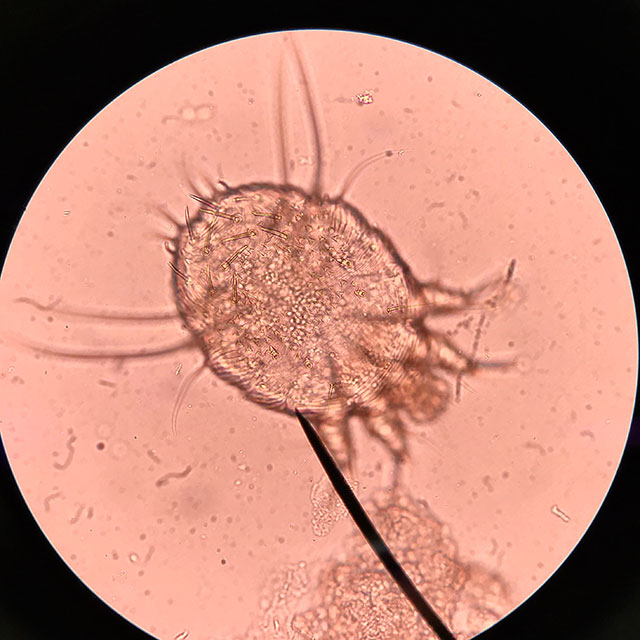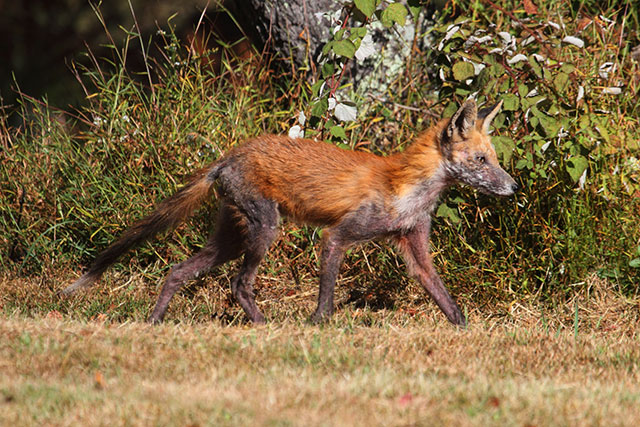Sarcoptic mange
Learn about sarcoptic mange in wildlife and how we manage and prevent its spread in Ontario.
About mange
Mange is a highly contagious skin disease caused by parasitic mites. It can infect both domestic and wild mammals. There are several different types of mange, each caused by a different mite species.
Sarcoptic mange, caused by the Sarcoptes scabiei mite, is one of the most common types of mange. With sarcoptic mange, mites infest the skin of many mammal species, including:
- red foxes
- coyotes
- wolves
- raccoons
- domestic dogs

The mites burrow through the outer layer of the animal’s skin, where they form tunnels and lay eggs. Once the eggs hatch, the newly hatched mites spend their life on a single host animal.
Winter is a difficult time for wildlife infected with mange. Infested wildlife are commonly seen in early winter when they experience increased stress from colder weather and may take increased risks to get food from human sources.
Signs of mange infection
Burrowing mites cause extreme skin irritation, which causes inflammation, itching and hair loss.

Severe infections can result in:
- extensive hair loss
- scabbing
- thickened skin
- thick, grey, foul-smelling crusts caused by secondary bacterial infections
Extreme discomfort and hair loss caused by mange can lead to exposure to the elements, starvation and death.
How mange is spread
Mange is spread by:
- direct contact with an affected animal
- contact with a contaminated environment, such as animal den sites and bedding areas
Mange and other wildlife diseases can spread more easily in dense populations.
Infections in humans or pets
Some types of sarcoptic mange can infect other species, including humans who come into close contact with infected animals or contaminated sites. However, infections in humans is rare.
If you suspect you may have contracted mange, consult a medical doctor.
If you suspect your pet has mange, contact your veterinarian immediately.
Management and reporting in Ontario
Mange is a naturally occurring and widespread disease in wildlife in Ontario. It typically does not have a significant effect on stable wildlife populations. The ministry does not actively capture and treat wildlife infected with mange. Outbreaks of mange within wildlife typically resolve on its own over time.
If you suspect a wild animal has mange, keep your distance from the animal and leave it alone. If the animal poses an immediate threat to public safety and exhibits threatening or aggressive behaviour, call your local police department.